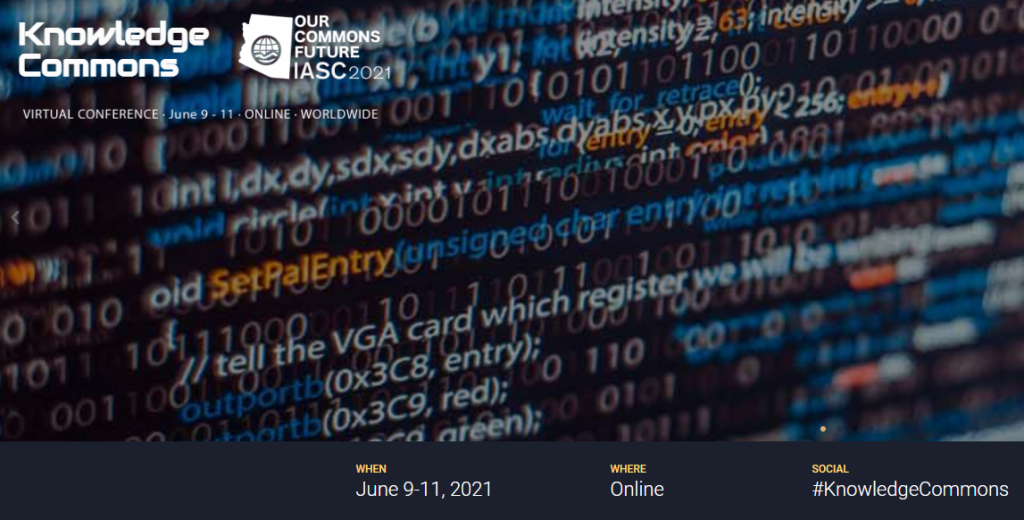國際共有資源研究協會(International Association for the Study of the Commons, IASC)幾乎每年都會籌辦與各類共有資源有關的研討會。例如在 2021 一整年,IASC 就舉辦了包含「太空中的共有資源」、「漁業與水產養殖共有資源」、「共有化人類世(Anthropocene)」等共十場的研討會。
中研院資訊所副研究員莊庭瑞博士,以及資創中心范菁文博士亦在 2021 年參加了其中的「知識的共有資源」(Knowledge Commons)研討會,並就(1)發生公共衛生緊急狀況時,資料與資訊的開放近用(2)原住民知識的共有化及抵抗,此二主題,分享相關的研究成果。以下即為其發表的相關說明及簡報。
莊庭瑞:There are many places we can look for biological knowledge commons and I think the examples we will get all have different characteristics. In common with Knowledge Commons, however, I feel that shareable resources we find in biological knowledge commons shall mostly be presented as public goods or club goods. That is, use of the resources is non-rivalrous in nature, but barriers can be set up to prevent the use of the resources. So, the interesting question to ask is what are the structural factors that shape a shareable resource into a club good but not a public good, and vice versa. As compared to common-pool resources, access to resources is not really regulated by geophysical conditions of the user communities (e.g., based on where they are). This is true both for the knowledge commons and biological knowledge commons.
When compared to knowledge commons, however, resources in biological knowledge commons are rooted in biophysical materials and because of this, there are issues about access to these materials: whether access to them is excludable or not, and if so, how the exclusion is enforced. In addition, individuals can be the sources of these biophysical materials (e.g., virus extracted from human tissues) so by necessarity we have to factor in questions of incentive and participation. We have to ask, from the perspectives of the individuals who are providing the source biophysical materials, issues related to the co-production and sharing of resources at the end of the line.
We see this in Our World in Data which is a public good. Their COVID-19 datasets all have their sources from the individuals in the affected populations. Each individual is a reporting unit of disease data point. Our World in Data does the aggregation, refinement, and analysis, and the end results can be used without restrictions.
To some extent we also see this in GISAID though it is made into a club good. I can imagine being structured as a club good may help incentivize biomedical labs to participate in the co-production of the virus sequence databases.
